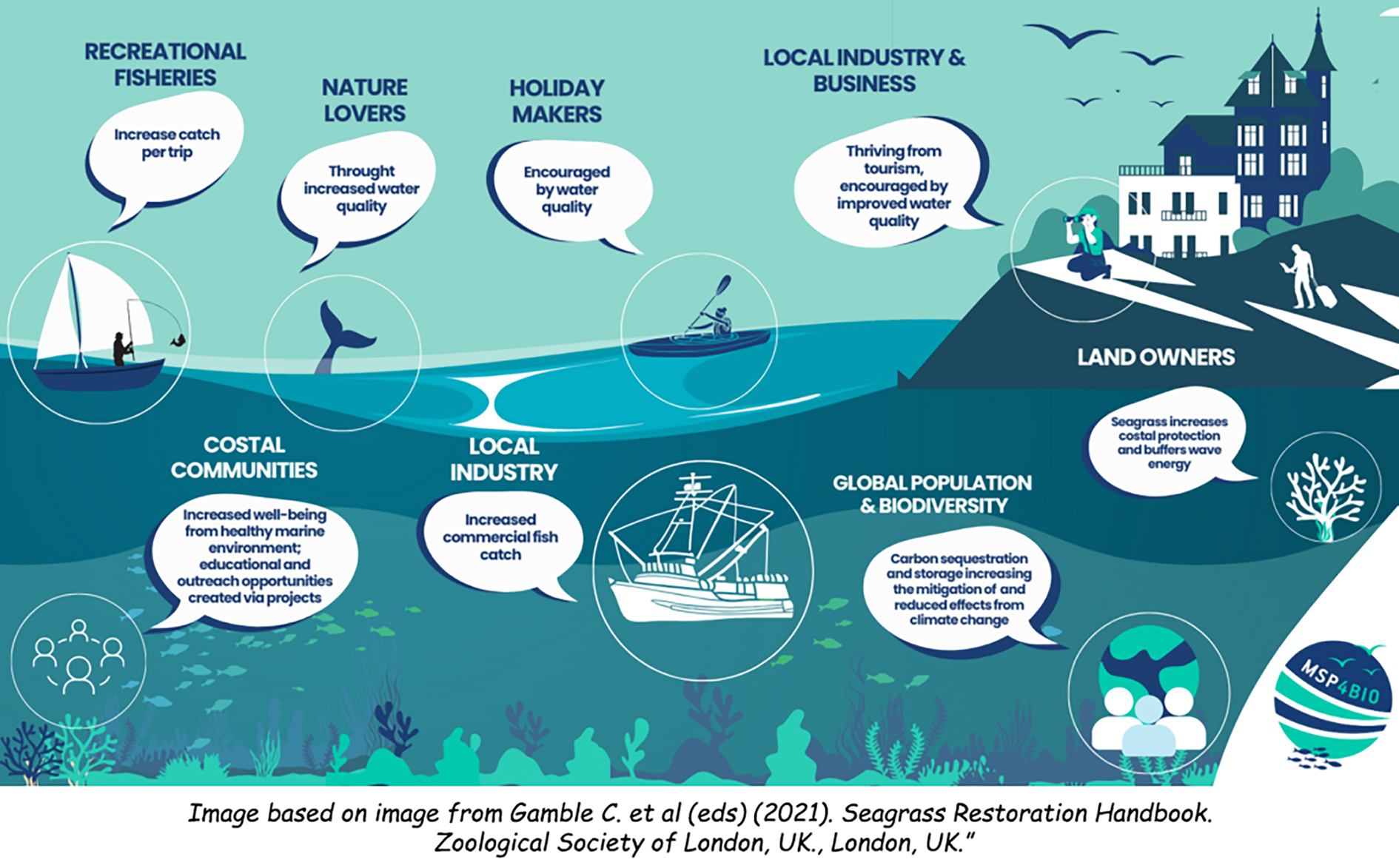In the light of the challenges posed by climate change, restoring ecosystems that have been degraded, damaged or destroyed allows nature to bounce back and flourish.
Discover three impactful types of restoration measures employed across the marine environments surrounding the MSP4BIO test sites.

Authors:
Martina Bocci, CNR Italy
Tea Marasovic, PAP/RAC
Ivan Sekovski, PAP/RAC
In May 2020, the European Commission adopted the EU Biodiversity Strategy for 2030 which outlines an ambitious plan to protect and restore biodiversity in the EU over the coming decade. This Strategy, a core part of the European Green Deal, sets out the targets to protect 30% of the EU’s Seas and strictly protect at least a third of the EU’s protected areas.
In marine management, different levels of marine protection are provided by area-based management tools – marine protected areas (MPAs) and other effective area-based conservation measures (OECMs). According to EEA (2023), over the last decade, the total area covered by MPAs in the EU has increased substantially – from 5,9% in 2012 to 12,1% in 2021 owing to the expansion of the Natura 2000 network and protected areas established at the national level.
Despite this increase in protection, marine ecosystems continue to face growing pressures from climate change, coastal development, overfishing, pollution, marine traffic, and other human activities, warning us that nature protection needs to be complemented by nature restoration efforts. The UN Decade on Ecosystem Restoration, running from 2021 through 2030, serves as a rallying call for the protection and revival of ecosystems worldwide to achieve global goals. Most recently, the European Parliament voted in favour of the proposed Nature Restoration Law. This Law, which entered into force on 18 August 2024, sets a target for the EU to restore at least 20% of the EU’s land and sea areas by 2030 and all ecosystems in need of restoration by 2050. In terms of marine ecosystems, this entails the restoration of habitats like seagrass beds or sediment bottoms which provide significant benefits, including climate change mitigation, and restoring the habitats of iconic marine species such as dolphins, porpoises, sharks, and seabirds.
Based on the analysis presented in the MSP4BIO project deliverable D 2.3 “State-of-the-art overview of the protection and conservation measures”, the paper is focused on three distinct restoration measures and examples of best practice: the establishment of artificial reefs, restoring oyster habitats and the rehabilitation of seagrass meadows.
Read the full paper here!
